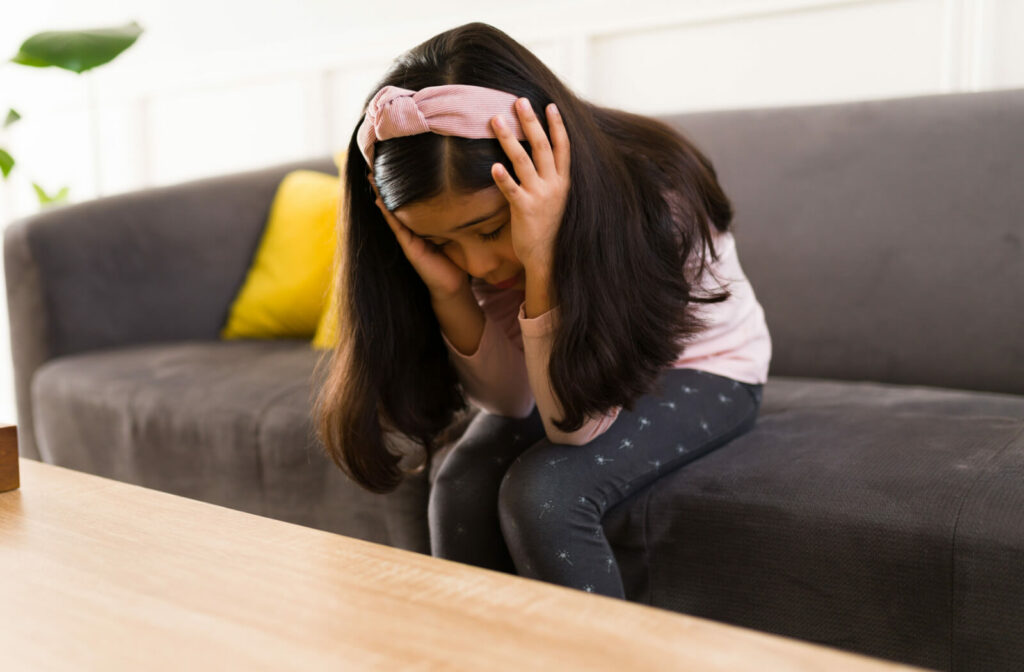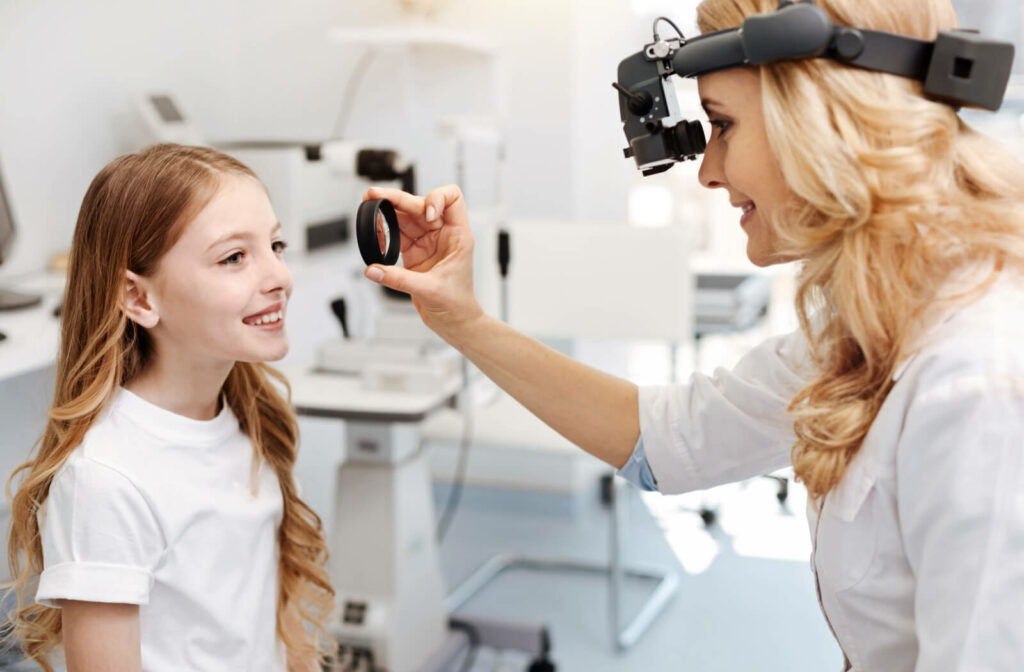As a parent, you’re constantly keeping an eye on your child’s health and well-being. While you may be quick to jump on signs of a cold or a fever, monitoring your child’s vision is just as important. In today’s world, with so much screen time, it’s common for kids to develop myopia (commonly known as nearsightedness) at an early age. In fact, worldwide, myopia is becoming increasingly common among children and has currently reached epidemic proportions among kids.
Your child may not tell you about their vision problems, so you should observe their behavior for signs of myopia, including rubbing their eyes, sitting too close to the television, and struggling academically. Annual eye exams are key for detecting signs of myopia and other potentially developing vision concerns.
How Can You Tell if Your Child Has Vision Problems like Myopia?
When your child struggles to see at far distances, it can be a sign they’re developing myopia. Your child may complain of symptoms such as:
- Eye fatigue
- Headaches
- Blurry vision
- Squinting Eyes
- Rubbing Eyes
However, it’s also possible that they won’t communicate their vision problems because they may assume what they’re experiencing is normal. Regular annual eye exams are crucial to identifying myopia and correcting vision. Most often, parents will notice behavioral changes that can indicate vision problems.
Squinting & Rubbing Eyes
If your child is squinting, blinking excessively, or rubbing their eyes often, it could be a sign of myopia. They may be rubbing their eyes or blinking in an attempt to clear their vision. Squinting temporarily helps reduce the amount of light entering the eye, allowing them to better focus on what’s in front of them.
While these coping methods may work for a few minutes, they’re not long-term solutions to correcting myopia. An eye exam is the first step to reducing headaches, eye strain, and fatigue.
Sitting Too Close to the Screen
Sitting with their books too close to their face or settling right in front of the computer monitor, tablet, or television can indicate kids are having trouble seeing from a distance. If they can’t see from a distance, they might try to move closer to their books or screens until they can see what’s in front of them.
Experts recommend watching television from 10 feet away to prevent eye strain. Other digital screens, including e-readers, tablets, smartphones, and computers, should be about arm’s length away from the eyes. If your child struggles to see at these distances, an eye exam can help detect and correct myopia or other vision problems.
Struggling in School
If your child is having trouble in school, poor eyesight could be the reason they’re struggling. They might have trouble seeing the board and be unable to engage in class. Sometimes, untreated vision problems can be misdiagnosed as behavioral issues like ADHD.
If your child has poor academic performance, have their eyes examined for vision problems. The proper corrective lens prescription may help support your child’s interest in school and make learning less frustrating.

Frequently Complaining of Headaches
Another sign of childhood myopia is frequent headaches. When children have myopia, their eyes have to work harder to focus on objects at a distance, which can cause eye strain and lead to headaches. This is because the eye muscles responsible for focusing become exhausted from the extra exertion required to maintain clear vision.
If you notice your child frequently complaining of headaches, it’s a good idea to schedule an eye exam to check for myopia or other ocular problems. With early detection and proper treatment, myopia can be managed effectively, minimizing the impact on a child’s quality of life.
Can You Slow the Progression of Myopia?
The rates of myopia are increasing, but there are myopia management options available to slow the progression and help prevent the need for a strong prescription in adulthood. Myopia management methods include:
- Orthokeratology (ortho-k): Ortho-k lenses are overnight contact lenses that can help reshape the cornea as your child sleeps to allow light to refract properly on the retina to make vision clearer during the day.
- Soft contact lenses: Specialty soft contact lenses use dual focus treatment zones to slow axial elongation, the lengthening of the eyeball that causes myopia.
- Atropine eye drops: Low-dose atropine eye drops are a nightly drop that relaxes the focusing muscles in the eye to slow the development of myopia.
Controlling myopia early can help preserve your child’s eye health as they become adults. High myopia-related eye conditions include detached retina, glaucoma, cataracts, or myopic macular degeneration.
Address Your Child’s Myopia Early
Keeping an eye on your child’s vision is essential, and a comprehensive eye exam can help detect vision changes early on. If you notice signs of myopia in your child, schedule an appointment at Optical Illusions and let our team assess their eyes.
Proper screening, diagnosis, and treatment can help keep your child’s vision healthy, protecting their sight in the long run. While the signs of myopia may be subtle, it’s crucial to address them promptly and provide treatment so they can enjoy a bright, healthy, and clear future.




